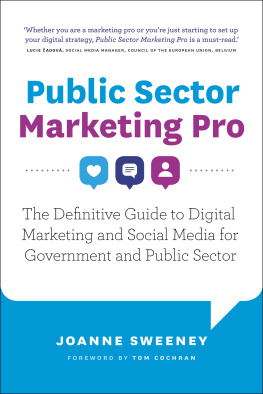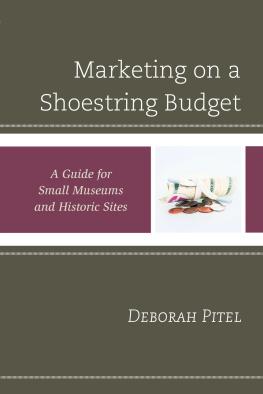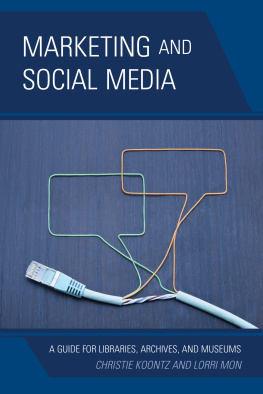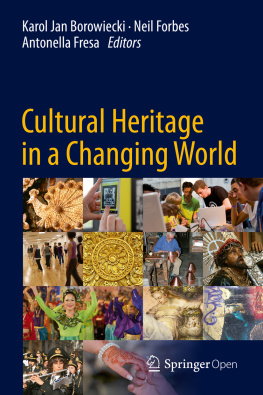MARKETING AND PUBLIC RELATIONS FOR MUSEUMS, GALLERIES, CULTURAL AND HERITAGE ATTRACTIONS
Visitors to museums, galleries, heritage sites and other not-for-profit attractions receive their information in changing ways. Communications channels are shifting and developing all the time, presenting new challenges to cultural PR and Marketing teams. Marketing and Public Relations for Museums, Galleries, Cultural and Heritage Attractions, as well as providing some of the theory of marketing, provides the latest available case studies coupled with comments and advice from professionals inside and outside the cultural sector to describe the possibilities and outline strategies for the future.
A strong theme of change runs through each chapter. The economic climate is already affecting the publicly funded sectors and business and private sponsorship. How will it change over the next few years? The print media is contracting; reading and viewing patterns are changing as online and mobile media grow. What are the trends here, in Europe, the US and elsewhere? Sustainability and global warming are not just buzz words but will have a real impact on public and private institutions and their visitor patterns. Population patterns are also changing, with new immigrants arriving and the proportion of over-60s increasing in Western countries. Cultural tourism has enjoyed a great surge in popularity and huge investments are being made in museums, galleries and events. Marketing and PR play a crucial role in the success of such ventures and are illustrated with case studies from the UK, US, Australia, Middle East and New Zealand.
Marketing and Public Relations for Museums, Galleries, Cultural and Heritage Attractions is aimed at students of marketing, museums, culture and heritage as well as professionals working in a range of cultural organisations from small to large, and at different stages of market development from new entrants to those offering mature products. This includes museums, galleries, heritage and visitor attractions, and community organisations, as well as organisers of festivals, markets, craft fairs and temporary exhibitions.
Ylva French has over 25 years experience as a marketing and public relations professional working in the arts, tourism, leisure, museums and heritage. She set up her own marketing communications agency in 1988, and since then has operated as an independent consultant in the arts and museum sectors, as well as running the Campaign for Museums. She wrote the Blue Guide London (A&C Black five editions) and with Sue Runyard has co-authored the Marketing and Public Relations Handbook (2000).
Sue Runyard is former Head of PR for the Royal Botanic Gardens, Kew, the Victoria & Albert Museum, the Natural History Museum, and the J. Paul Getty Museum in Los Angeles. She has served as press officer for two cabinet ministers during a secondment to the Cabinet Office, and has administered a national Marketing Grants Scheme, working with hundreds of heritage and tourism organisations throughout the UK. She has published several books and papers and contributed to many overseas projects.
MARKETING AND PUBLIC RELATIONS FOR MUSEUMS, GALLERIES, CULTURAL AND HERITAGE ATTRACTIONS
Ylva French and Sue Runyard
Published 2011
by Routledge
2 Park Square, Milton Park, Abingdon, Oxon, OX14 4RN
Simultaneously published in the USA and Canada
by Routledge
270 Madison Avenue, New York, NY 10016
Routledge is an imprint of the Taylor & Francis Group, an informa business
2011 Ylva French and Sue Runyard
The right of Ylva French and Sue Runyard to be identified as authors of this work has been asserted by them in accordance with sections 77 and 78 of the Copyright, Designs and Patents Act 1988.
All rights reserved. No part of this book may be reprinted or reproduced or utilised in any form or by any electronic, mechanical, or other means, now known or hereafter invented, including photocopying and recording, or in any information storage or retrieval system, without permission in writing from the publishers.
Trademark notice: Product or corporate names may be trademarks or registered trademarks, and are used only for identification and explanation without intent to infringe.
British Library Cataloguing in Publication Data
A catalogue record for this book is available from the British Library
Library of Congress Cataloging in Publication Data
A catalogue record for this book has been requested
ISBN 10: 0415610451 (hbk)
ISBN 10: 041561046X (pbk)
ISBN 10: 0203813758 (ebk)
ISBN 13: 9780415610452 (hbk)
ISBN 13: 9780415610469 (pbk)
ISBN 13: 9780203813751 (ebk)
Preface
What is the future for marketing, audience development and public relations in museums and galleries and at heritage attractions? The pressure is on to deliver more visitors within limited budgets and at the same time create favourable conditions for increasing earned income and stimulating sponsorship and donations. Maintaining good relations with hard-pressed local authorities, government departments and other stakeholders remains a priority.
This new book addresses these issues with pithy contributions from leaders in the sector. It aims to spread good practice and inspire creative communications inside and outside organisations of every size.
This is a book for practitioners of marketing, audience development and PR working in the cultural sector. It is also a book for students preparing for a career in museums, galleries or heritage.
We take a practical approach to communications in all its forms based on our experience, but we start with strategic planning and analysis. PR and marketing people are often dropped into the middle of a fast-moving scenario that demands instant action. It is possible to stumble through a job or even a career on a short-term, direct-reaction basis, but it is not advisable. We hope this book will inspire you to sail through day-to-day challenges while engaging your team and colleagues in longer- term thinking and planning, meeting whatever the next decade will bring.
Ylva French and Sue Runyard
February 2011
Quotes from Leaders of the Sector
Marketing and PR have found a role in the management of arts and heritage organisations. They have progressed from being bolt-on activities to being a fundamental tool of management and an essential ingredient of success. Here, some leaders in the field give their thoughts.
Having a great idea is only the start of a journey; executing it is as big a challenge, and then capitalising upon it in marketing and PR terms is essential and may seem easy. It rarely is. A clearly thought-through plan encompassing branding, timetable and manpower is essential for success.
Penelope, Viscountess Cobham, Chairman, VisitEngland and Museum Prize Trust
Museums and galleries cannot simply rely on the world discovering that they are good. It is crucial to think through all the processes from high-level advocacy work by members of the board, individual public presentations from the director and other senior staff, and a concerted programme of marketing based around exhibitions and activities, to making the most of every possible creative opportunity to gain press coverage. Of course, this must be matched by what visitors discover themselves, whether at the gallery or online the experience must be engaging and welcoming to all.







